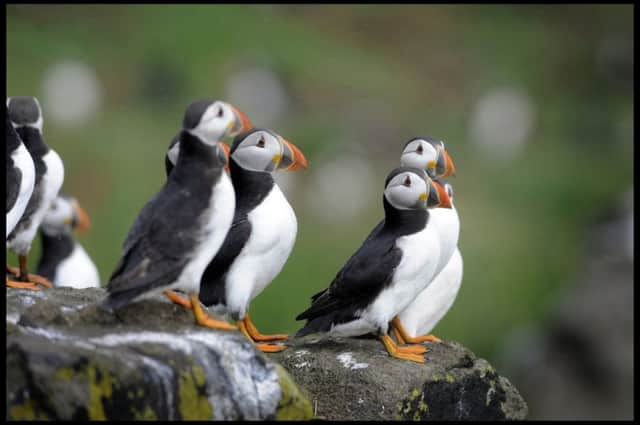Hostile undercurrent in signs from sea
This article contains affiliate links. We may earn a small commission on items purchased through this article, but that does not affect our editorial judgement.


We tend to be blasé about seabirds because they are a common sound and sight around our coasts, and yet Scotland is home to nearly half of the seabirds breeding in the European Union.
As a nation, we therefore have a very important role in looking after their breeding colonies and keeping tabs on their changing fortunes.
Advertisement
Hide AdAdvertisement
Hide AdAt the National Trust for Scotland we feel this particularly strongly because colonies on our properties, such as St Kilda, Fair Isle, Mingulay, Canna, Staffa, Unst and St Abbs, account for about a fifth of Scotland’s seabirds.
Seabirds may nest on land but most are truly part of the marine ecosystem, spending most of their lives out at sea and deriving all their food there (some larger gulls that have developed the habit of depending on our discarded rubbish are something of a recent anomaly).
The changing fortunes of seabirds can therefore give us an insight into what is happening beneath the waves. Like the proverbial canary in the mine, they can give us early warning of problems looming far over the western horizon. The message emerging from the deep is troubling and we would do well to take heed of it.
Species such as the Arctic Tern, Arctic Skua and Kittiwake have declined by 81%, 62% and 58% respectively since 1999 and climate change is believed to be a major factor in the declines. On St Kilda World Heritage Site, Kittiwake numbers at monitored colonies have dropped by 90% in the last 10 years. All these seabirds are dependent on sandeels as prey and these are particularly badly affected by rising sea temperatures. Sea surface temperatures in parts of the North Sea have risen by 0.5C per decade since 1983 – far faster than temperature increases recorded on land. Even off the west coast, temperatures have risen by 0.4C per decade.
The European Shag, which has also declined by 18%, is believed to be particularly susceptible to increased storminess, another symptom of climate change.
While seabirds are being hit by climate-induced changes in their environment, they are also subject to a number of more direct human pressures. The fishing industry can impact seabirds negatively where it targets prey species, such as sandeels, but also positively through discards.
Major oil spills have not afflicted Scotland since the Braer disaster, but the spill in the Gulf of Mexico reminds us that this is still a threat, particularly as production shifts to deeper water off the west coast. Other chemical spills, such as the horribly sticky polyisobutene, have caused heavy mortality. A more recent pressure is the rapid rise in the development of offshore wind power and potentially tidal turbines in the future.
Overlaid on this increasingly congested map of our seas is a growing network of Marine Protected Areas and a framework of Marine Spatial Planning that is supposed to help with resolving conflicting demands.
Advertisement
Hide AdAdvertisement
Hide AdBoth are dependent on good information and it is here that we are in danger of taking a great leap backwards. While a few colonies have been counted regularly by organisations and committed volunteers, knowledge of the overall quantity of seabirds in Scotland has relied on periodic counts of the whole country.
These have taken place at roughly 15-year intervals in 1969, 1985 and 2000. Mathematicians will have spotted that the next one is due in 2015 but it is not going to happen. Why? Because no funding has been allocated to it.
The volunteers and voluntary organisations are ready to go but the small amount of money needed to co-ordinate the count, compile the statistics and publish the results, in former years covered by central government funding, has not been allocated.
As the result, the multi-million pound Environmental Impact Assessments demanded of the oil or renewables industries, the substantial investment in planning Marine Protected Areas and our legal requirements to report the lion’s share of Europe’s seabirds, not to mention a cheap way of monitoring climate change at sea, will be depending on information that is over 15 years old. Imagine if our planning authorities were working off maps from the late 1990s!
Will Scotland still be home to half of Europe’s seabirds in 10 years time?
We probably won’t know.
• Dr Richard Luxmoore is Senior Nature Conservation Adviser at the National Trust for Scotland www.nts.org.uk